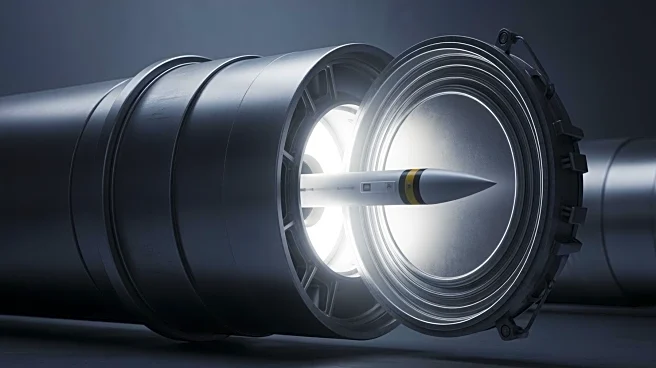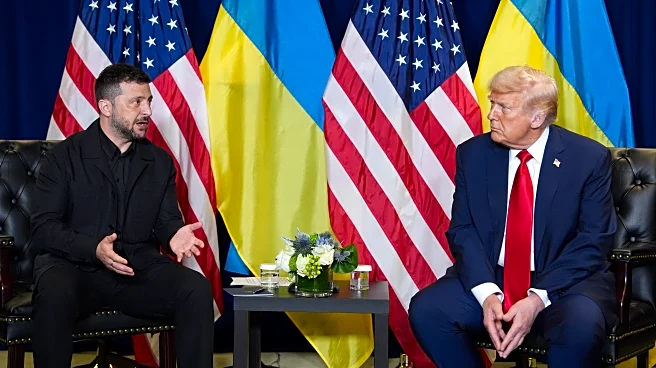What's Happening?
President Volodymyr Zelensky of Ukraine met with President Trump at the White House to discuss the potential supply of Tomahawk cruise missiles to Ukraine. Despite the cordial nature of the talks, President Trump indicated
that the U.S. is not ready to provide these missiles, citing concerns over escalating the conflict with Russia. Zelensky had hoped to use the missiles to target Russian oil and energy facilities, which he believes would weaken Russia's war economy. The meeting followed a phone call between Trump and Russian President Vladimir Putin, where they agreed to meet in Hungary soon. Zelensky suggested a potential exchange of Ukrainian drones for the missiles, but no agreement was reached.
Why It's Important?
The decision not to supply Tomahawk missiles to Ukraine is significant as it reflects the U.S.'s cautious approach to involvement in the Ukraine-Russia conflict. The provision of such advanced weaponry could have escalated tensions, potentially drawing the U.S. deeper into the conflict. For Ukraine, the lack of additional military support may limit its strategic options against Russian forces. The meeting also highlights the complex diplomatic balancing act the U.S. is attempting, as it seeks to support Ukraine while avoiding direct confrontation with Russia. The outcome of these discussions could influence future U.S. foreign policy and military aid decisions.
What's Next?
President Trump and President Putin are expected to meet in Hungary, which could lead to further diplomatic developments. The ongoing discussions about military support for Ukraine are likely to continue, with potential implications for U.S.-Russia relations. Zelensky's outreach to European leaders suggests that Ukraine will continue to seek international support to bolster its defense capabilities. The situation remains fluid, with the potential for further negotiations or shifts in policy depending on the outcomes of upcoming diplomatic engagements.












